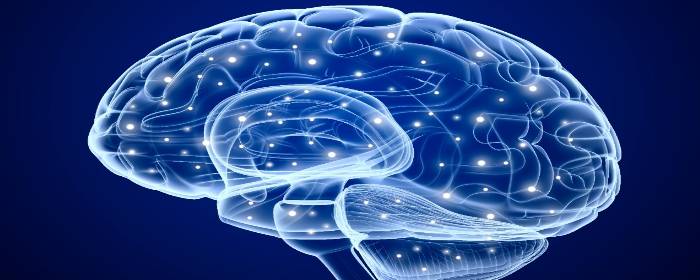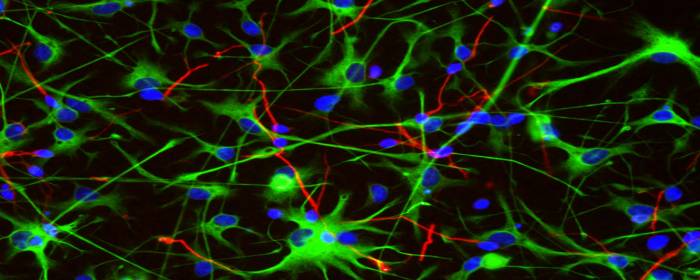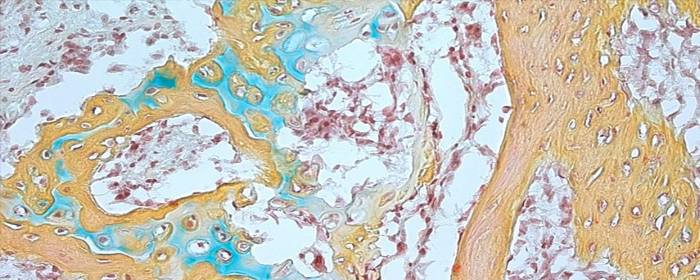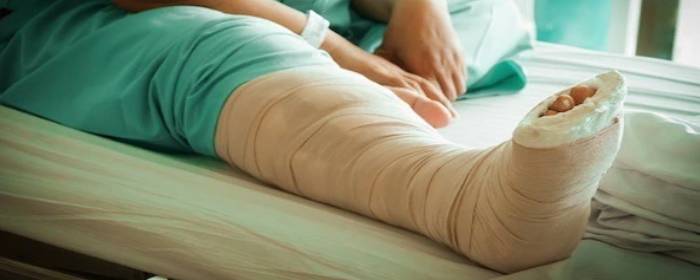
by admin | Jan 14, 2019 | Stem Cell Research, Stem Cell Therapy, Stroke
Patients who suffer ischemic stroke have some treatment
options, but many of them require immediate intervention and so are not useful
if too much time has elapsed between the stroke and treatment. Therapies that
employ stem cells are promising alternatives because stem cells can differentiate
into brain cells and potentially help to replace tissue that has been damaged
or destroyed.
A recent study published in Stem Cells
and Development has shown for the first time that a specific type of stem
cell – called ischemia-induced multipotent stem cells – may be able to help
with such repair of brain tissue in patients who have suffered a stroke.
Specifically, the research team demonstrated the technical ability to isolate
the ischemia-induced multipotent stem cells from the brains of elderly stroke
patients.
The scientists then used protein
binding techniques to determine where in the brain these stem cells came from.
They found that the cells came from areas of the brain where brain cells had been
damaged or killed from the stroke. These cells were located near blood vessels
and expressed certain biological markers that enabled the researchers to
confirm that they qualified as stem cells. Specifically, these cells had
proliferative qualities that suggested that they could potentially be used to
re-populate damaged areas of the brain. The cells also showed the ability to
differentiate into different types of cells, a key characteristic of stem cells
used for therapeutic purposes.
This study represents a
significant step in overcoming the technical challenges associated with
isolating and classifying ischemia-induced multipotent stem cells. The next
step for researchers will be to test the potential of these cells in stroke
treatment. If researchers show that these stem cells can be used to
successfully repair damaged areas of the brain – and more importantly, restore
functions that were disrupted by the stroke – then physicians and scientists
may be able to work together to translate these findings into therapies that
are regularly used in stroke.
Reference
Tatebayashi et al. 2017. Identification of multipotent stem
cells in human brain tissue following stroke. Stem Cells and Development, 26(11), 787-797.

by admin | Jan 4, 2019 | Stem Cell Research, Stem Cell Therapy, Studies
Spinal cord injury can be one of the most devastating
injuries. Long neurons that extend from the brain down the spinal cord are
severed and scarred. In most cases, this damage can never be repaired. If
patients survive an injury to the spinal cord, they can be permanently
paralyzed. Researchers have attempted to use high-dose steroids and surgery to
preserve the spinal cord, but these approaches are either controversial or
largely ineffective.
Ideally, one would create an environment in which nerve
cells in the spinal cord could regrow and take up their old tasks of sensation
and movement. One of the most promising approaches to do just this is stem cell
transplantation.
To test this concept, researchers used
stem cells derived from human placenta-derived mesenchymal
stem cell tissue (not embryonic stem cells) to form neural stem cells in
the laboratory. These neural stem cells have the ability to become neuron-like
cells, similar to those found in the spinal cord. The researchers then used
these stem cells to treat rats that had experimental spinal cord injury. The
results were impressive.
Rats treated with neural stem cells regained the partial
ability to use their hindlimbs within one week after treatment. By three weeks
after treatment, injured rats had regained substantial use of their hindlimbs.
The researchers confirmed that this improvement was due to neuron growth by
using various specialized tests (e.g. electrophysiology, histopathology). Rats
that did not receive stem cells did not regain substantial use of their
hindlimbs at any point in the study.
This work is particularly exciting because it shows that
stem cells can restore movement to animals who were paralyzed after spinal cord
injury. Moreover, the researchers used human stem cells derived from placenta,
which suggests that this effect could be useful in human spinal cord injury
patients (perhaps even more so than in rats). While additional work is needed,
these results offer hope to those who may one day develop severe spinal cord
injury.
Reference:
Zhi et al. (2014). Transplantation of placenta-derived
mesenchymal stem cell-induced neural stem cells to treat spinal cord injury.
Neural Regen Research, 9(24): 2197–2204.

by admin | Dec 27, 2018 | Stem Cell Research, Stem Cell Therapy
A number of different stem cell types have been shown to exert significant therapeutic effects when transplanted into the central nervous system. These cells include non-hematopoietic stem cells such as mesenchymal stem cells and neural/progenitor stem cells and carry out their effects by secreting what are known as neurotrophic paracrine factors, whichhelp to control the immune system.
In recent years, it has been suggested that rather than requiring the injection of stem cells, brain injury repair may be achieved by injecting the molecules that stem cells tend to secrete – known as secretome. The stem cell secretome includes growth factors as well as cytokines and chemokines. Investigators have begun to explore whether delivering these substances, rather than stem cells, could offer a more efficient means to therapy.
The rationale is that by delivering these substances directly, it should be possible to stimulate the proliferation of progenitor cells in the central nervous system and therefore instigate repair. However, initial studies have shown that the infusion of individual cytokines does not have the expected effect. According to the authors of a review published in Biochimie, it may be that multiple substances will need to be simultaneously infused in pre-tested concentrations so that they can act synergistically to optimize therapeutic effects.
Clinical trials are underway to determine the safety to patients of the secretome approach and to identify any relevant risks so that potential risks can be weighed against potential benefits of this type of therapeutic approach. There is also research on a wide variety of topics that will need clarification if effective stem cell secretome therapies are to be developed for brain repair. These topics include clarifying aspects of tissue transport and determining the mechanisms by which secretomes confer their benefits.
Reference: Drago, D. (2014). The stem cell secretome and its
role in brain repair. Biochimie, 95(12),
2271-2285.

by admin | Dec 14, 2018 | Parkinson's Disease, Stem Cell Research, Studies
Parkinson’s disease is a progressive neurodegenerative disorder that causes tremor,rigidity, changes in facial expression, and several other symptoms. Whilesufferers usually retain their full cognitive abilities and memory, they tendto be impacted in mood and some mental health conditions that emerge as part ofthe condition process.
Parkinson’s disease is caused by loss of brain cells in a specific region of the brain called the substantia nigra. The neurons in this area of the brain contain dopamine, and as those nerve cells die, the levels of dopamine in the brain decrease. Consequently, patients with Parkinson’s disease often take medications that improve or accentuate dopamine signaling in the brain. These drugs can be effective for a certain period of time, but eventually, the condition will overcome the ability of these drugs to improve dopamine signaling. There is no cure for Parkinson’s disease, but researchers hope stem cells may be the answer.
Since dopamine drugs have worked reasonably well to control the symptoms of Parkinson’s disease, researchers assumed that replacing dopamine cells in the brain would help treat Parkinson’s disease. In a way, it did. When people with Parkinson’s disease received transplants of stem cells intended to produce dopamine, some of them experienced dramatic improvements in motor function. However, patients still had several other symptoms of Parkinson’s disease such as fatigue, bowel problems, sexual problems, and mood disorders. Neuroscience researchers realized Parkinson’s is not just about a loss of dopamine. It turns out, that while stem cells can help restore dopamine in people with Parkinson’s disease, they also coulduse help with serotoninneuron regenerating.
As a result of this groundbreaking work, researchers are now planning and implementing experiments in which Parkinson’s disease patients will receive stem cell transplants containing both dopamine cells and seroton in cells. If effective, we will be one step closer to a new and powerful treatment for Parkinson’s disease.
Reference: https://blogs.scientificamerican.com/scicurious-brain/parkinsons-is-much-more-than-dopamine/?WT.mc_id=send-to-friend

by admin | Dec 3, 2018 | Osteoarthritis, Stem Cell Research, Studies
The human skeleton is made up of bone, cartilage, fat, nerves, blood vessels, and bone marrow. While the skeleton is usually strong and vibrant in youth, it changes considerably with age. Many people, especially women, experience demineralization of bone called osteoporosis. Most of us will suffer from painful, stiff, arthritic joints either from osteoarthritis or rheumatoid arthritis or both. While some of the diseases of bone and joints have specific treatments, none of them helps to restore bone and joints to their younger state. If one could reintroduce skeletal stem cells into the body, that could all change. Excitingly, researchers have recently isolated human skeletal stem cells from bone and other tissues.
At first glance, this breakthrough may not seem so surprising. One might wonder: didn’t we already have stem cells that form bone and cartilage? The answer is yes, but with an important caveat. Before researchers recently isolated human skeletal stem cells, the only stem cells that could be used to produce bone and cartilage were rather unpredictable. In addition to bone and cartilage, the mesenchymal stem cells that have been long used to form these tissues could also produce fat, muscle, fiberglass, blood vessel cells, and other tissues. In other words, the stem cells were broadly multipotent and, by extension, could not easily be used for a specific purpose, like mending bone or repairing an arthritic joint. That is why the recent discovery of these particular skeletal stem cells is so important.
The researchers isolated skeletal stem cells from various human tissues, mainly bone. They then used the skeletal stem cells to regrow bone and/or cartilage. Not only did the stem cells produce bone and cartilage in the first animal they tested, but they could retrieve stem cells from that animal and then cause bone to regrow in a second animal. This means that the skeletal stem cells have the capability of reproducing themselves.
The same researchers also discovered that when a skeleton is injured, such as in a bone fracture, the number of skeletal stem cells in that area increases dramatically. This makes sense since these cells are used to repair and regrow bone. It is also a promising result because it suggests that stem cells could be used to accelerate bone and joint healing in humans.
Scientists not directly involved in this research heralded this finding as “an extremely important advance.” However, they also acknowledge that more work needs to be done before skeletal stem cells can be routinely used in patients with orthopedic conditions. Nevertheless, these results are an exciting development in the field of stem cell research and orthopedics.
Reference: https://www.sciencenews.org/article/humans-have-skeletal-stem-cells-help-bones-and-cartilage-grow

by admin | Nov 19, 2018 | Adipose, Osteoarthritis, Stem Cell Research, Stem Cell Therapy
Bone generally develops via one of two distinct mechanisms: intramembranous ossification and endochondral ossification. In the former case, mesenchymal progenitor cells directly differentiate into osteoblasts that form bone. In the latter case, the mesenchymal progenitor cells first create a matrix of cartilage that then acts as a template to enable the remodeling or development of bone tissue. This process of endochondral ossification is the predominant way that bone is generating during the healing process after bones are broken and fractures are endured. Using stem cells to facilitate this process can, therefore, be beneficial in non-healing bone fractures.
A new study published in Acta Biomaterialia has proposed that adipose tissue can be used in bone generation as a scaffold on which adipose mesenchymal stem cells can expand and allow for endochondral ossification. The researchers showed how adipose tissue could be used in this way, through what they termed Adiscaf, to successfully generate cartilage tissue and eventually bone tissue formation. The bone tissue that formed through this process contained bone marrow elements, further demonstrating the bone’s integrity and the promise of this procedure.
Compared to other strategies for building scaffolding, this strategy appeared successful because by using adipose tissue, the adipose stem cells were exposed to their native environment and therefore likely maintained functions they otherwise may not have. Not only will these findings help to solidify our understanding of how to nurture stem cells and enable them to differentiate in ways that can be therapeutically applicable, but they also specifically show how adipose tissue may be able to be used to generate a bone organ through endochondral ossification. Future research will likely help to clarify how these findings can be applied to patients to improve bone healing.







 St. Petersburg, Florida
St. Petersburg, Florida
